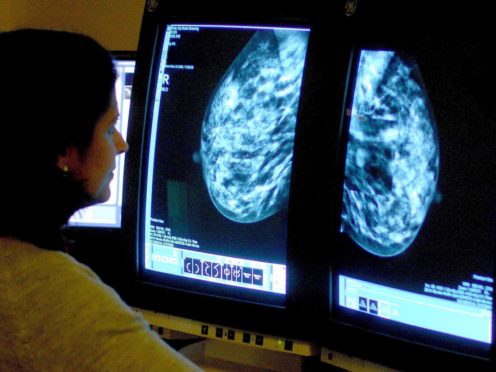Scientists have identified genetic changes that may predict the likelihood of breast cancer relapse in women who take a common type of hormone therapy.
It is believed the findings could help to identify those at risk so they can be given alternative treatments which could lower the chances of developing incurable secondary breast cancer.
Researchers at the University of Edinburgh studied tumour samples from patients who had been taking aromatase inhibitor for up to two years.
None had undergone surgery to remove their tumours.
Changes to “chemical signatures” during the work suggest it may be possible to predict which women are likely to relapse.
Dr Andy Sims, of the MRC Institute of Genetics and Molecular Medicine, said: “Treatment resistance is hard to study and laboratory experiments often do not closely resemble the situation in patients.
“This is the first time we have been able to investigate genetic changes in individual patients’ tumours over time.
“We hope the findings will help to develop new tests that predict which women on hormone therapy are likely to relapse so that they can be offered alternative treatments.”
Tumour samples were taken before the women started hormone therapy, within the first few weeks and after four months of treatment.
This allowed the scientists to see how treatment affected the tumours over time.
They found hormone therapy almost immediately triggered changes in the genes that were switched on in the tumours.
These differences became more pronounced over time.
Subtle differences were seen in the changes that occurred in women whose cancer had become resistant to treatment.
Chemical signatures, called epigenetic changes, were absent in tumours that developed resistance to hormone therapy but were present in those that had started growing again, after shrinking initially.
These differences were present in the first weeks of hormone therapy and scientists say it suggests it may be possible to predict which women are likely to relapse.
Dr Simon Vincent, director of research at charity Breast Cancer Now, which helped fund the study, said: “This is a promising early finding that could help us better understand how some breast cancers become resistant to therapy and what we can do about it.
“Drug resistance is a major hurdle that we must overcome if we are to finally stop women dying from breast cancer.
“It’s really encouraging that this study has identified epigenetic changes that may help predict which patients are more likely to see their cancer come back.
“We hope further research will now help to identify exactly when these changes may begin to appear and find ways to target them, enabling us to intervene at the right time.
“Through research like this, we hope to one day be able to identify when therapies are becoming less effective and when a change of treatment might be appropriate.”
